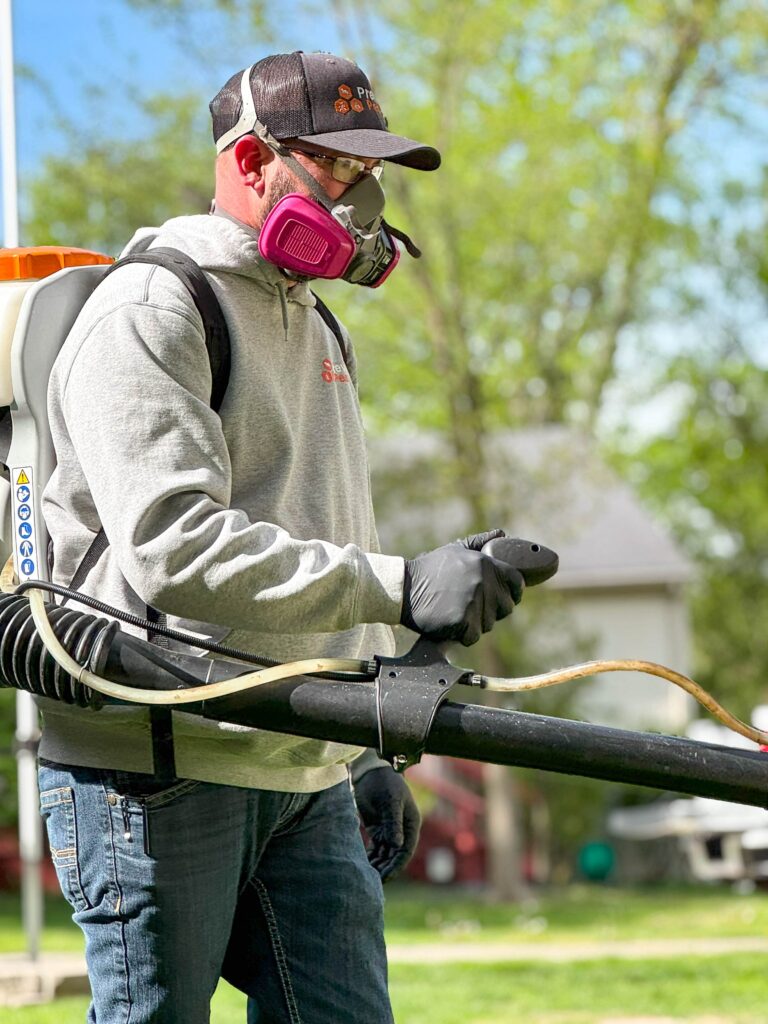Mosquitoes are not just a summertime nuisance; they are capable of turning any outdoor space into an uncomfortable and potentially unsafe environment. Beyond the itchy bites, they can carry diseases that affect both humans and pets. Their rapid breeding cycles, adaptable behavior, and ability to thrive in varied environments make them a persistent challenge for property owners.
For effective, ongoing control, monthly mosquito plans offer a level of consistency that one-time treatments cannot match. By combining regular monitoring with targeted applications, these plans address both the visible adult population and the hidden breeding sources that keep infestations going.
Understanding Mosquito Behavior and Breeding Cycles
To understand why monthly service works best, it is important to recognize how quickly mosquitoes can reproduce and spread.
- Rapid breeding: Mosquitoes can lay eggs in as little as a bottle cap of water, and within days, larvae can mature into biting adults.
- Short life cycle: Depending on the species and environmental conditions, a full life cycle can be completed in under two weeks.
- Multiple generations: In warm weather, several generations may emerge in a single month, compounding the problem.
- Localized habits: Many species stay within a few hundred feet of where they hatch, meaning nearby breeding sites directly affect your yard.
These biological traits make it essential to interrupt the life cycle continuously. Regular visits ensure treatment aligns with mosquito reproduction timelines, preventing surges in population between services. For insight into why certain properties become hotspots, this resource on mosquito attraction factors explains the environmental cues that draw them in.
The Benefits of a Monthly Mosquito Plan
Monthly mosquito programs go beyond reactive control; they are proactive strategies that keep pest pressure low over time.
- Consistent protection: Monthly treatments maintain a steady barrier against adult mosquitoes, reducing the risk of bites.
- Ongoing breeding site management: Standing water and shaded areas are monitored and treated before larvae mature.
- Seasonal adjustments: Technicians adapt treatment methods to match weather patterns and mosquito activity cycles.
- Early detection of other pests: Regular visits allow for spotting signs of other potential infestations around the property.
By maintaining a predictable schedule, monthly service ensures that protective measures never lapse, which is critical given how quickly mosquitoes can rebound after a single rain event.
Key Steps Involved in Monthly Mosquito Control
Professional mosquito plans typically involve several integrated steps to ensure both immediate relief and long-term prevention.
- Inspection: Each visit begins with a property survey to identify standing water, high-shade areas, and other mosquito-prone zones.
- Targeted treatment: Adulticides reduce the current population, while larvicides stop immature stages from developing.
- Source reduction: Removing or modifying breeding sites to make them less attractive to mosquitoes.
- Monitoring: Tracking population trends over time to adjust strategies as needed.
These steps form a cycle that disrupts mosquito reproduction while maintaining constant pressure on the existing population.
Why Consistency Outperforms One-Time Treatments
While a single treatment can temporarily reduce mosquito numbers, it rarely delivers sustained results. A monthly schedule offers several advantages that one-time efforts cannot match:
- Aligns with life cycles: Treatments occur before the next generation emerges, keeping populations low.
- Accounts for environmental change: Weather events, irrigation, and seasonal vegetation growth can alter breeding conditions quickly.
- Maintains a barrier: Residual treatments degrade over time; monthly reapplication keeps protection active.
- Reduces health risks: Lower mosquito numbers over the season mean fewer opportunities for disease transmission.
Choosing a consistent approach is especially important in regions with long warm seasons, where mosquitoes remain active for much of the year.
It is also worth noting that relying solely on personal sprays or temporary repellents leaves gaps in protection. While DIY approaches may seem convenient, they often fail to address breeding sources or adapt to changing environmental factors. This is why understanding the limitations of DIY pest control is key when evaluating your long-term options.
Long-Term Impact and Peace of Mind
A well-executed monthly mosquito plan provides benefits that extend beyond the current season. Continuous reduction in breeding opportunities helps weaken local mosquito populations over time, making each subsequent year easier to manage. This cumulative effect means that the more consistently you treat, the less likely it is that mosquitoes will re-establish themselves in large numbers.
Additionally, routine service builds a record of the property’s pest history, allowing technicians to anticipate problem areas before they escalate. This proactive knowledge, combined with year-round awareness of environmental changes, ensures that your outdoor spaces remain safe and comfortable for family and guests.
Investing in consistency not only improves your property’s livability but also helps protect against potential health risks associated with mosquito-borne diseases.
Keep Mosquitoes Away All Season Long
Do not let mosquitoes take over your outdoor space this year. For expert monthly protection tailored to your property’s unique needs, contact Prevent Pests and enjoy a season of comfort without the constant buzz and bites.


